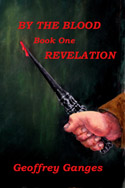By E.H. Hackney
 Most books on writing advise us to construct complete, detailed descriptions of our major characters before we begin writing. This is worthwhile, but I believe it is easy to overdo. Yes, I put together character sketches in advance. The protagonist in my fantasy novel is a wizard and a dwarf, and I definitely needed to know that in advance. But my beginning character descriptions are not extensive. If I go into too much detail, they are often wrong and must be rewritten or, worse yet, they constrain my character and limit his behavior.
Most books on writing advise us to construct complete, detailed descriptions of our major characters before we begin writing. This is worthwhile, but I believe it is easy to overdo. Yes, I put together character sketches in advance. The protagonist in my fantasy novel is a wizard and a dwarf, and I definitely needed to know that in advance. But my beginning character descriptions are not extensive. If I go into too much detail, they are often wrong and must be rewritten or, worse yet, they constrain my character and limit his behavior.
Consider a friend who wants to introduce you to someone, say a potential employee or even a blind date. They might start with a description of him—height, hair, eye color, build, where he is from. Do you know him? No. Well, suppose they expand on his resume—include his education, experience, what he does for a living. You still don’t know him. Your friend might even add that he is a great dancer and makes all of his own clothes. You know something about him but you still don’t know him.
It’s not until you meet the person and see how she walks and moves and uses her hands that you begin to get a sense of her. Do her eyes meet yours or keep sliding off to the side or to the floor? Does she continue to look around the room to find someone more interesting—or to see who is looking at her? Can she tell a joke? Can she get a joke? How does she treat the server? Now you begin to know the person.
The same is true with your characters. You can go into an extensive description but you, and your reader, don’t begin to know a character until you see him in action and relating to others and the setting. If you want to really see what your character is like, give him something to do. Better yet, give him some crap to deal with. Let us see the worn tips of his shoes kicking out from under the tattered hem of his wizard’s robe with each short, quick stride as he rushes to a house call. Then your readers, and you, will begin to know your character.
The same holds for setting. It has been argued, after all, that settings are really characters. You can build a detailed description of a region, or town, or living room, but you don’t really know it until you are there.
In a previous life I interviewed for a job in Seattle, Washington. I did some research beforehand, of course. I knew something of the economy, climate and geography. I had heard all of the stories about the “constant” rain. But it wasn’t until I saw snow-capped Mt. Rainier reflected in Lake Washington that I knew I wanted to live there. And even after living there for years I was still discovering more of its temperament and personality.
So let your readers explore settings through your character’s eyes. They will discover the nature and disposition of the wharf as your character strides there to meet a friend for an ale or to treat an injured prostitute. Through your character they will hear the creak of the hulls rubbing their fenders against the dock, see the skeleton of the ship’s rigging through the fog, hear the call of gulls and the laughs and arguments coming from the taverns, taste the salt in the damp air and smell the tangy scent of tar and rotting fish.
Why is this so? Because I don’t want to expound my story from a lectern. I want to be, at most, a guide as the reader and I explore the tale together. Because writing fiction is not a process of invention but a venture of discovery.
 E. H. “Hack” Hackney is a retired engineer turned fantasy writer who lives on the east slopes of the Sandia Mountains of New Mexico. His articles and essays have appeared in East Mountain Living magazine, Albuquerque the Magazine, East Mountain Telegraph, The Independent, and SouthWest Sage. He published his first novel By the Blood, Book One: Revelation in 2013 under the pen name Geoffrey Ganges. You can find Hack on his websites at EHHackney.com and GeoffreyGanges.com, and on Twitter at @ehhackney and Facebook at E. H. Hackney, writer.
E. H. “Hack” Hackney is a retired engineer turned fantasy writer who lives on the east slopes of the Sandia Mountains of New Mexico. His articles and essays have appeared in East Mountain Living magazine, Albuquerque the Magazine, East Mountain Telegraph, The Independent, and SouthWest Sage. He published his first novel By the Blood, Book One: Revelation in 2013 under the pen name Geoffrey Ganges. You can find Hack on his websites at EHHackney.com and GeoffreyGanges.com, and on Twitter at @ehhackney and Facebook at E. H. Hackney, writer.
This article was originally published in the May 2013 issue of SouthWest Sage and is reprinted here by permission of the author.
Image “Cracked Diamond” courtesy of George Hodan / PublicDomainPictures.net


























Leave a Reply